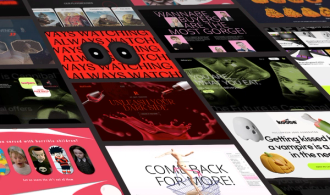Imagine you're at a crossroads where human creativity meets the precision of Artificial Intelligence (AI). This is exactly where User Experience (UX) finds itself right now.
As designers, the question that we keep seeing is: ‘What does the future hold now that AI is revolutionising the field and its current applications?’ As we become increasingly comfortable with the technology, more people are viewing AI as an indispensable tool in every designer's kit. Let’s delve into why…
Friend not foe
The common misconception is that AI will replace designers. However, rather than taking over, it’s become clear that AI is much more of a complementary aid. Design is as much about feeling and intuition as it is about data and processes, and the latter is where AI can excel. AI can be massively valuable in completing routine tasks, freeing up designers to channel their energy into innovative and thoughtful design.
The art of prompting
One thing that quickly becomes clear to anyone who uses a chat-based AI is the importance of effective prompting. Prompting has become a skill in its own right and, therefore, incorrect prompts can make for a very frustrating experience. Compare creating a prompt to compiling a design brief for a new team member. Like any colleague, AI needs proper guidance and design direction. UX domain expertise is imperative here to achieve meaningful results from the technology.
Practical applications of AI
AI has already found its way into various design aspects from brainstorming, data analysis and generative design tasks to empathy building, scenario building and role-playing. As an ideation tool, the software broadens our considerations, urging the exploration of edge cases that may have gone unnoticed and encouraging outside-of-the-box thinking. AI-driven tools allow us to generate placeholder text that stress test design layouts and UI patterns, while also making content recommendations to target specific user groups.
AI’s remarkable ability to process large amounts of qualitative data comes to the forefront in content and thematic analysis. It efficiently categorises interview transcripts and survey responses, providing valuable insights into user preferences, trends and behaviour. On the other hand, generative tools empower designers to swiftly compare various starting points for a design, helping them explore a range of user-centric design possibilities before honing in on a refined solution.
Yet, the most groundbreaking revelation lies in persona building. AI has the ability to presume the role of each persona we establish, enabling designers to delve deep into user experiences. Interactive role-playing allows designers to build on user pain points, feelings and goals, building greater empathy and compassion for end users than a static persona alone.
Navigating unforeseen challenges
It's crucial to bear in mind that an AI is only as good as the data used to train it, and the biases held by its creators can be magnified within the technology, subsequently influencing their decisions.
When creating an AI-generated user persona, if the training data predominantly reflects a specific demographic then the AI might unconsciously prioritise that group's preferences, neglecting other user segments. This inherent bias can significantly impact the user experience by moulding user personas, guiding design choices, content recommendations and product features. As such, designers must vigilantly recognise and rectify biases within AI systems to strike a harmonious balance with traditional design methods.
Embracing the design revolution
AI's seamless integration into the design process has ushered in a new era of innovation, efficiency, and empathy. From brainstorming to data analysis and generative design, AI is not just a tool but a valuable collaborator in the design process, pushing the boundaries of what's possible and ultimately delivering user-centric solutions.
As we delve deeper into the vast potential of AI within UX design, one fact remains undeniable: AI will become an integral part of the design landscape. However, to thrive in this ever-evolving landscape, designers must always remember that AI should serve as a supplementary tool that we can enrich with our expertise and human-centred perspectives.








